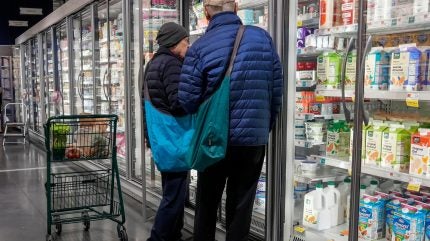
Sales of organic drinks in the US rose more than 5% last year, supported by demand for healthier and sustainable products, industry advocates said.
According to industry body the Organic Trade Association, sales of organic drinks grew by 5.2% to $9.5bn as producers sought to meet US consumer interest in areas like functional and sustainable ingredients.
“With ingredients like ashwagandha and mushrooms, low-sugar drinks, kombuchas, sports drinks, non-alcoholic offerings, and protein-enriched smoothies all on the shelf, this category is expected to cross the $10bn mark in 2025,” the OTA said.
Drilling down into product segments, sales of dairy alternatives grew by 13.5%, sales of tea by 10.5% and, combined, sales of “spirits, liquor and cocktails” by 10%. Organic milk, at $3.9bn, remains the largest drinks segment by sales. The OTA said sales of dairy alternatives reached $850m.
Sales of organic food rose to exceed more than $65bn last year, supported by growth in areas including bakery, fruit, dairy and eggs.
The total sales of organic food and beverages in the US reached $65.4bn in 2024, a rise of 2.3%, the OTA said.

US Tariffs are shifting - will you react or anticipate?
Don’t let policy changes catch you off guard. Stay proactive with real-time data and expert analysis.
By GlobalDataSales of organic produce climbed 5.2% to $21.5bn, helped by growing sales of berries and bananas.
Produce accounted for more than 30% of sales of all organic products, food and non-food. However, growth was not seen across the produce fixture, with sales of packaged salads down more than 4%.
Within grocery, sales of bakery and fresh breads grew by 2.8%, driven by artisanal products like sourdough, the OTA said.
Dry breakfast goods sales rose by 8.1%, as US consumers sought better-for-you options that “align with family dietary goals”, the association added.
Consumers cooking restaurant-quality meals at home and viewing food as medicine boosted demand for organic grocery ingredients, the report said.
“Younger consumers, particularly Millennials and Gen Z, are also helping shape grocery sales trends by balancing health-conscious choices with quality and indulgence,” the OTA said.
US sales of organic baby food and formula, at $1.6bn, grew by 3.8% but was “limited by supply and capacity constraints”.
Organic dairy and egg sales rose by 7.7% to $8.5bn. Sales of organic yogurt grew by 10.5%, its second-highest rate in more than 15 years, the OTA said.
Egg sales surged by 16.1%, partly due to the outbreak of avian influenza in the US that hit supplies and pushed up prices.
Overall, sales of certified organic products in the US reached $71.6bn in 2024, with organic non-food products accounting for $6.2bn of the total.
Looking ahead, the OTA projected a compound annual growth rate of 5.1% through 2029, with the organic sector expected to add approximately $18bn in sales by the end of the decade.
Organic Trade Association co-CEO Tom Chapman said: “When we look at the last two years, this is very good news that we are on the right trajectory with organic growing more than twice as fast as the total market.
“While we have significant opportunities to drive organic’s share of the total market, we are seeing increased consumer adoption of organic and a positive return to industry growth which are very good signs.”
Organic Trade Association co-CEO Matthew Dillon emphasised the importance of improved consumer education to increase adoption of organic products.
He suggested one way to support this effort would be “by adding product attributes to the USDA Organic logo, such as an organic dairy company being able to call out ‘no growth hormones’ or ‘no antibiotics’ as part of the Organic seal on their packaging”.
The narrowing price gap between conventional and organic products in categories such as groceries and dairy also made organic options more accessible to price-sensitive consumers, particularly in mainstream retail channels, the OTA said.


